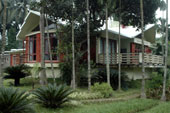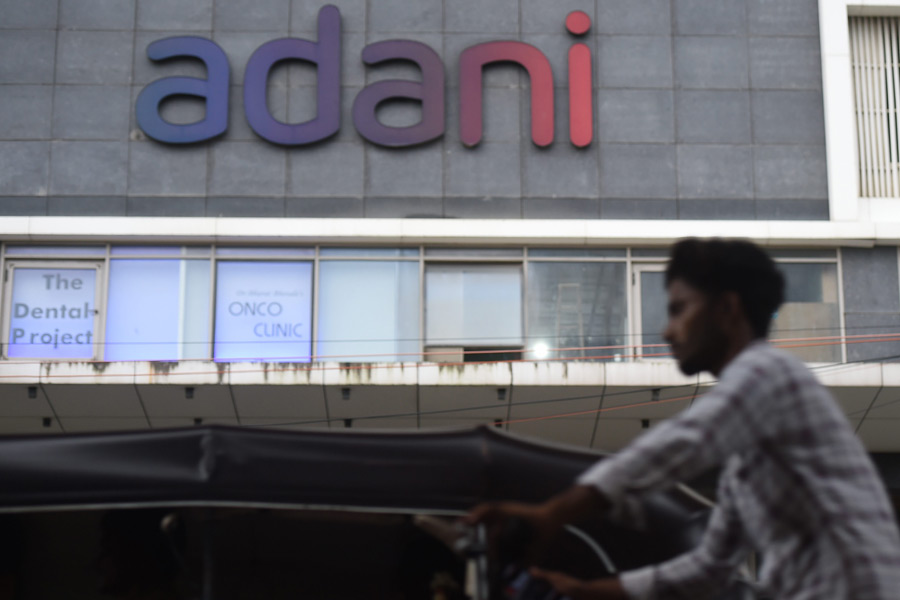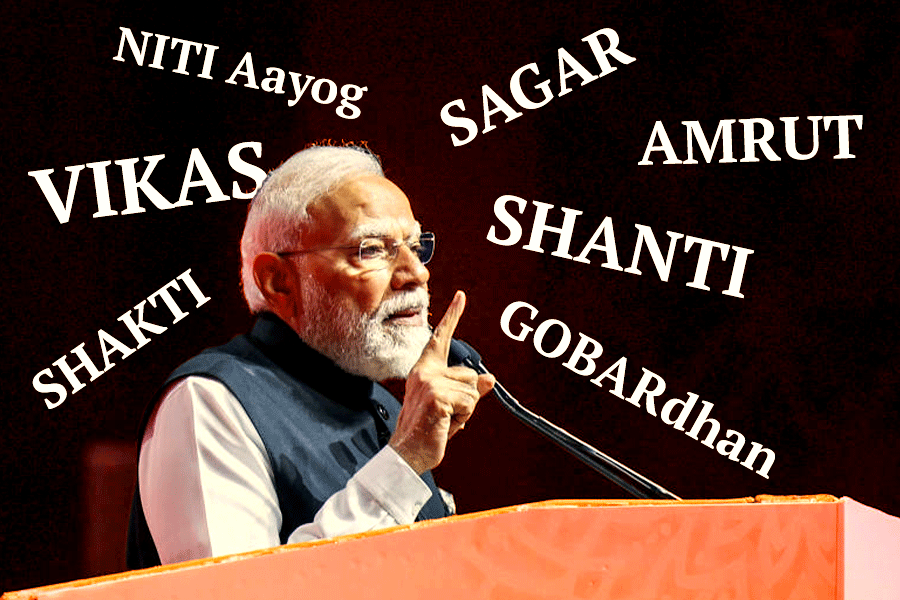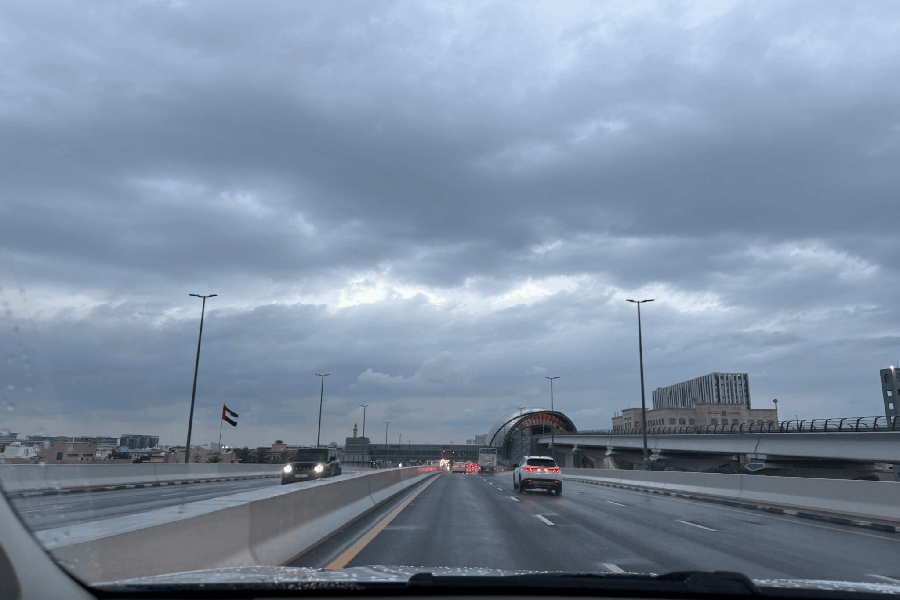 |
| Great escape: B.B. Chatterjee’s farmhouse in Bakrahat (top); Arijit Dutta’s property in Baruipur |
 |
Less than an hour’s drive from Calcutta’s Park Street are the lush green tracts of Narendrapur, Baruipur and Bakrahat. Till about a decade ago, the entire area was home largely to numerous guava orchards, dotted by a few small factories here and there, endorsing the rustic charms of quiet solitude. Today it is still rustic, but with a difference. Drawn by that very prospect of undisturbed solitude, affluent Calcuttans have quietly been buying large tracts of land and building farmhouses as weekend retreats.
The houses behind their protective walls may not exactly conjure up visions of the immense hectares of land and palatial structures valued at crores of rupees that are commonly identified with farmhouses in north India. But these are large enough to accommodate a fair-sized garden with a lawn, a pond or two and a house with a commodious verandah or terrace. For those fortunate enough to own bigger properties, a miniature reserve forest for a backyard ? with its own wildlife which could mean snakes, monitor lizards and other nocturnal creatures, or a nursery of green plants ? is not a distant dream, especially if you are a nature lover.
For most Calcuttans, trapped in the confines of multi-storied flats and narrow lanes, the idea of owning a home in sylvan surroundings, however small or big, depending upon individual tastes and pockets, is a dream. Earlier generations revelled in that baganbari culture which along with Hillman cars and the expansive ways of the Bengali bhadralok represented a way of living that is close to almost forgotten. The baganbari is making a comeback once again as farmhouses. In fact, over the past five years, at least 50-60 farmhouses have come up in the outskirts of the city. Madhupur and Bihar and Jharkhand where many of these baganbaris were located are now being transposed in the south Bengal countryside.
Says Arijit Dutta, film distributor and owner of Priya Cinema who inherited 9.5 bighas of land in Baruipur from his grandfather, and has spent five to six years renovating the house there: “I’d always wanted a farmhouse, not a city-type structure, or a house in the earlier baganbari style. The idea is to have a quiet, relaxed weekend with all the luxuries.” Dutta is a self-confessed environmentalist and makes it a point to go down to Baruipur regularly, mostly over weekends, either with friends or alone, and has learnt to live with monitor lizards. A major attraction is pond-fishing “which all Bengalis love”, he says, and his ponds there are full of fish and spawn.
There is ample scope in those parts to indulge in such activities. “The best part is that whenever you sit in the verandah or terrace or look out of the window, you get to see endless green everywhere,” says B.B. Chatterjee, who built his farmhouse some years back, not too far from his factory in Bakrahat. Chatterjee, a businessman and formerly based in Hong Kong, says that as a farmhouse “this place offers the best you can get anywhere”.
The house is exclusively for private use and Chatterjee and his family would prefer to keep it that way. “No lending it out to others for weekend getaways and the like,” he says firmly.
Monica Saha, who built her house on a modest two-bigha plot beyond Bakrahat market, shares a similar view. The wife of a successful architect, she and her husband have designed the house ? a one-bedroom affair with a huge verandah ? themselves. While her husband is caught up with work, she manages to visit her farmhouse regularly. “It’s not just weekends. I go there whenever I feel like, more likely in the middle of the week, and throw a big party in winter,” she says.
Why Bakrahat which is virtually back of beyond? Unlike Baruipur which is on the oft-travelled Sonarpur-Narendrapur route, home to many such farmhouses (which sometimes are an extension of factories owned by businessmen), Bakrahat is relatively less populated and off the beaten track. “That’s because a close friend discovered the place about five to six years ago, and we bought the adjacent property,” says Monica, who avers that it’s the right choice. The river is just three kilometers away and, more importantly, Bakrahat is green and pollution free. “It is the hub of the flower industry and because the entire area is taken up by nurseries and plant cultivation, there is no other industry there.” In fact, nursery owners who inhabit the place say they do not want much intrusion, and are reluctant to sell their holdings.
Builder Arjun De, managing director of the Multiple Group, who chose a five-bigha property in Bakrahat after much deliberation, is happy with his selection. “It was a choice between buying a small flat in Santiniketan or land here. This was a more suitable option.” He feels the infrastructure has improved the quality of life, what with the municipality, of late, supplying sweet, potable water, unavailable earlier; the less erratic power supply, better roads, which mean an easy driving distance from the city, workable telephones and mobile phone connectivity. Increased government activity in the area would mean more development, and over time the entire city, given the pressure of residential housing, could extend deeper into south Bengal, predicts a city planner.
For the moment, however, the countryside is still undeveloped. But more and more Calcuttans are opting to buy farmhouses, feels De. Indeed with the opening of the new Baruipur Bypass, driving time will be further cut by another 15 minutes or so, feels Dutta. Those with large properties like Dutta have made good use of their land. “Fifty percent of the land has deliberately been kept almost wild,” he says, “with trees of every description and orchards. No chemical fertilisers are used.”
Apart from the obvious desire for green surroundings, many of these properties were bought as an investment. The last five years have seen land prices in those very areas escalate to about 10 times its original purchase price. While officially figures vary, land which sold approximately at about Rs 50,000-60,000 a bigha five years ago sells currently at about Rs 5-6 lakhs. “We’re happy the trend is catching on,” says Dutta, and others echo that.
With less land now available, future wannabe farmhouse owners might find themselves dishing out a hefty sum, which would make their acquisition a not-so-casual buy, unlike their predecessors. But prices have seldom deterred those with intent and for the immediate future at least, farmhouses seem an enviable asset, not least for friends and relatives who look forward to being invited for the occasional weekend.










